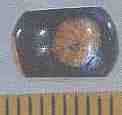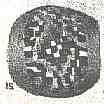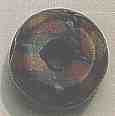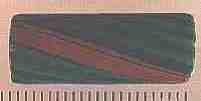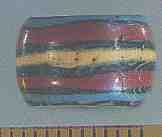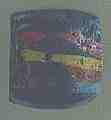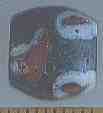Your path =Home>Uses of Beads>Heirlooms Index> Kayan Beads
Beads from Borneo:
The Southwell Collection of Kayan Beads
Tom Harrisson, Director of the Sarawak Museum in Kuching, Sarawak (East Malaysia) in the 1960s, was very interested in beads. He asked Hudson Southwell to collect some from the Kayan people in 1964/5. I am grateful to Heidi Munan, Curator of Beads and Lucas Chin, then Director, for this information and the pictures. Prices (per bead) were determined by Kayak elders and are in U.S. dollars as of 1988. Scales are tenths of an inch (2.5 mm).
|
The Kayan live along the rivers flowing from the interior of Borneo. They are the bead traders of the forest. A young Kayan man goes to the coast and works a few years for an oil rig or lumber company. He saves his money and when he returns never has to work again, as the money is only used to pay taxes. Obviously he buys beads on the coast and this pattern has apparently been going on for centuries. Their collections are quite eclectic.
|
REFERENCES
Heirlooms of the Hills by Pete Francis
Notes on Sundry Asiatic Beads by Horace C. Beck in Man, 1930, October:166-82 + 2 plates (source of the Lukut Kong Ba picture).
The Southwell Collection of Kayan Beads in the Sarawak Museum: An Annotated Checklist by Heidi Munan-Oettli in Sarawak Museum Journal, 1988, 39(60):105-9 + plate.
__________________________________________________
Small Bead Businesses | Beading & Beadwork | Ancient Beads | Trade Beads
Beadmaking & Materials | Bead Uses | Researching Beads | Beads and People
Center for Bead Research | Book Store | Free Store | Bead Bazaar
Shopping Mall | The Bead Auction | Galleries | People | Events
The Bead Site Home | Chat Line | Contact Us | Site Search Engine | FAQ
